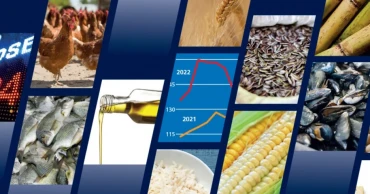Costs
Global food import costs near record $2 trillion, hurting poorest
The food import costs are on course to rise to near record $2 trillion this year, around $128.6 billion more than predicted in June, as countries are facing ballooning costs for staples, the UN food agency said Friday.
Many economically vulnerable countries, with weak economic forecasts and high debt-to-GDP ratio, are paying more while receiving less food, heaping pressure on the world's poorest.
The low-income countries' food import shipments are expected to shrink by 10 percent as their food import costs for the year are expected to remain little changed, pointing to growing accessibility issues.
Read: Australia to send millions to Bangladesh, Myanmar for food, shelter
"These are alarming signs from a food security perspective, indicating importers are finding it difficult to finance rising international costs," the UN Food and Agriculture Organization (FAO) said in its twice-yearly Food Outlook report.
In addition to beverages and basic foods like cereals and meat, the FAO's food import costs cover a larger range of items, from fruit and vegetables to seafood, chocolate, tea, and spices.
World food prices jumped to record highs in March after the war broke out between Russia and Ukraine, the latter a key grains and oilseeds producer.
Although the UN-mediated Black Sea Grain Initiative, starting July this year, guaranteed safe sea passage to ships carrying food grains in the conflict-prone region, it was unable to significantly cut food prices in the global market.
Read: Currency depreciations risk intensifying global food, energy crisis: World Bank
Food imports will rise by $180 billion, or 10 percent, above the previous year's record high, with high- and upper middle-income countries accounting for the majority of the increase.
As the purchasing power of countries that import goods is reduced by rising prices and a stronger dollar, the rate of that bill's increase will slow, lowering volumes.
Also, import costs for agricultural inputs such as fertilisers, fuel and seeds are expected to rise 48 percent to a record $424 billion from 2021, forcing some countries to buy and use less.
Higher bills and a stronger dollar will cut input applications, threatening both productivity and food security into next year, the FAO said. "This will inevitably lead to lower productivity, lower domestic food availability and negative repercussions for global agricultural output and food security in 2023."
3 years ago

